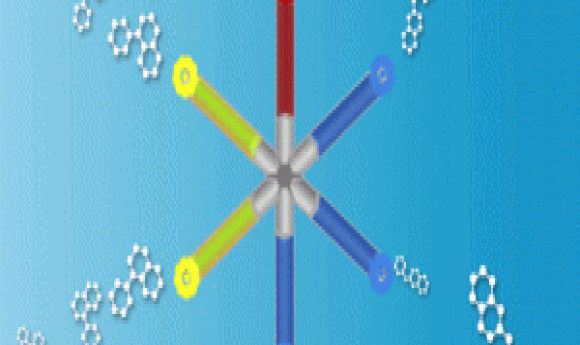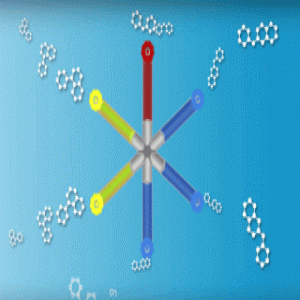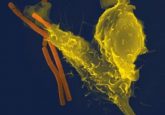The stars align in novel HIV treatment

Using a novel, star-shaped drug delivery system, researchers take a step closer to improving HIV treatment and prevention.

A drawing of the star-shaped drug delivery method (1).
Although antiretroviral therapies have proven effective, treatment noncompliance is a major obstacle in the fight against HIV. Adherence to treatment is a multifaceted global health concern that is governed by a number of factors. Currently, all available treatments involve a stringent, long-term, daily dosing regimen, leaving treatment prone to noncompliance.
“When we set out, we knew that if we could find a way to reduce the frequency, and do so in a way that’s orally delivered, it could be a significant impact for HIV treatment as well as prevention,” said Ameya Kirtane, a postdoctoral associate at the Massachusetts Institute of Technology and lead author of a study in the journal Nature Communications that reveals a novel, slow-release drug delivery system for HIV antiretroviral therapy.
To achieve this, the researchers designed a star-shaped pill consisting of six arms joined together by an elastic center. The flexibility of the system enables the star-shaped dosage to fold up into an orally-delivered capsule taken once per week. Once the pill reaches the stomach, the capsule dissolves and the star unfolds to release the drug. But how can a week’s worth of drugs be administered all at once?
“One of the major advances in this paper from an engineering standpoint was that we could actually load polymers that could release drugs at different rates onto this platform,” said Kirtane. The team loaded each arm of the star with six different drug formulations designed to maintain a steady-state of drug in the body. To test this system, the researchers administered the pill to pigs and tracked drug concentrations over time. The distinct drug-polymer matrices enabled a successful week-long administration of three different antiretrovirals, proving that a once-a-week dosing regimen is feasible. However, the researchers wanted to know if this system could improve compliance in human populations.
With the expertise of their collaborators, the researchers went on to explore the potential impact at the patient and global population levels. Taking into consideration a number of factors, including patient behavior and viral dynamics, the researchers developed a model that predicted a 6-fold reduction in therapeutic failures. Furthermore, to gauge the potential epidemiological impact, they used modelling with the help of previously published data on adherence to daily versus weekly treatments of similar medications. “What [we] found was that introduction of this sort of system would potentially prevent 200,000-800,000 new infections over the next 20 years in South Africa alone,” said Kirtane.
This project was funded by the Bill and Melinda Gates Foundation and under the umbrella of this project, Kirtane and colleagues hope to develop a similar drug delivery system for other diseases such as malaria.





